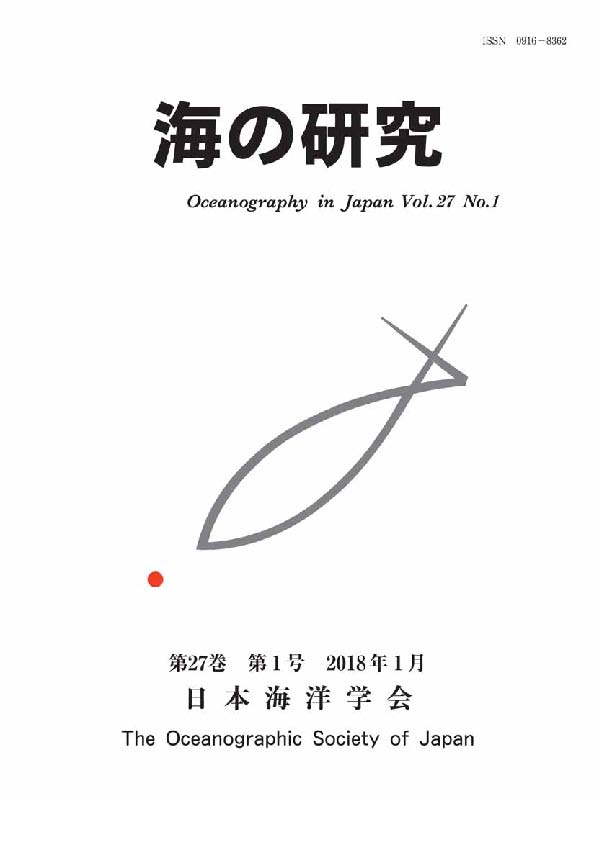
- Issue 6 Pages 189-
- Issue 5 Pages 145-
- Issue 4 Pages 101-
- Issue 3 Pages 69-
- Issue 2 Pages 33-
- Issue 1 Pages 1-
- |<
- <
- 1
- >
- >|
-
Sachihiko ItohArticle type: review-article
2012 Volume 21 Issue 2 Pages 33-50
Published: March 15, 2012
Released on J-STAGE: September 01, 2019
JOURNAL FREE ACCESSIn the Kuroshio/Oyashio region, water masses, materials, and biota that originated from subtropical and subarctic regions come together, giving rise to a rich and diverse ecosystem. To understand the dynamics of the Kuroshio/Oyashio ecosystem, the author has studied processes of both physical oceanography and fisheries oceanography in the region. Physical oceanographic phenomena, such as mesoscale eddies, frontal waves, and tidal mixing, were investigated by various approaches, including field observations, numerical simulations, and analysis of existing datasets, including satellite data. These studies revealed (1) the behavior, structure and water mass characteristics, movement mechanism, and heat and material transport properties of mesoscale eddies in the Kuroshio-Oyashio extension region; (2) the structure, propagation, and energetics of Kuroshio frontal waves;and (3) turbulent mixing intensity in the Kuril Straits, the mechanism of mixing, and its impact on the formation of intermediate waters. In terms of fisheries oceanographic issues, the author has focused on the sardine and anchovy, which are key species of the Kuroshio/Oyashio ecosystem. These studies quantify larval transport processes, clarify the relationship between temperature and recruitment rate, and propose a method of estimating the environmental history of larvae sampled in the field. The results of these analyses are reviewed in this article.
View full abstractDownload PDF (3193K) -
Yusuke OkazakiArticle type: review-article
2012 Volume 21 Issue 2 Pages 51-68
Published: March 15, 2012
Released on J-STAGE: September 01, 2019
JOURNAL FREE ACCESSMeridional overturning circulation plays an important role in the global climate change at centennial to millennial scales through transport of heat, carbon and nutrients. During the last deglacial period, the Pacific meridional overturning circulation (MOC) was temporarily established when the Atlantic MOC was nearly collapsed. I discuss mechanisms for the establishment of the Pacific MOC and its role in global climate. Further, I provide a perspective on a quest for glacial carbon reservoir in the deep sea.
View full abstractDownload PDF (3933K)
- |<
- <
- 1
- >
- >|